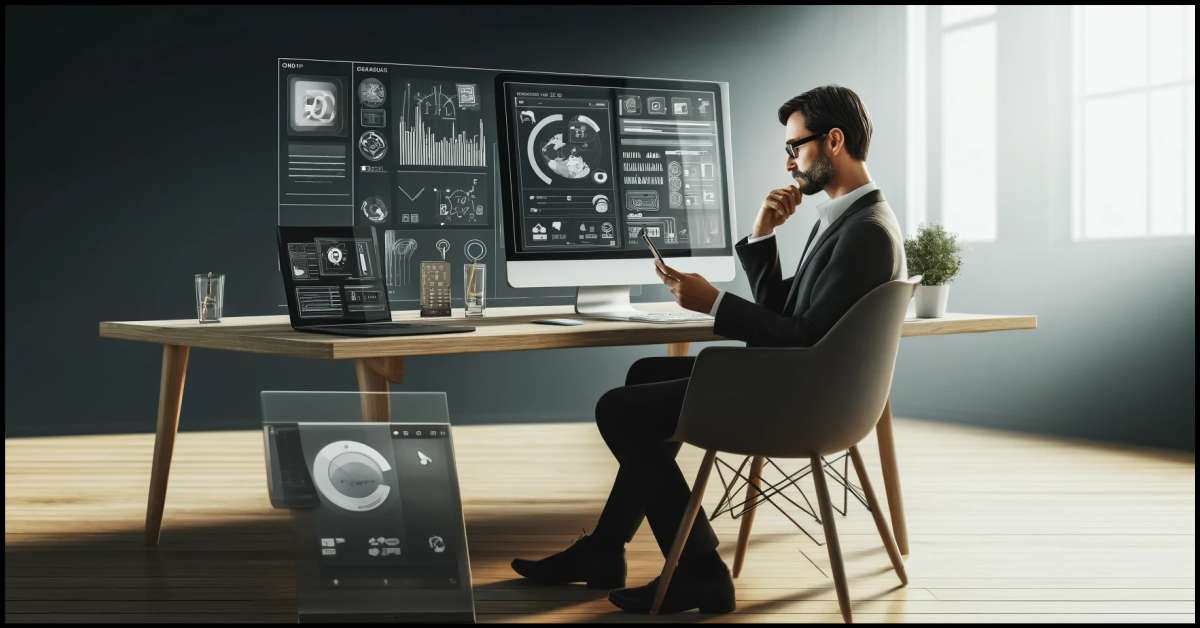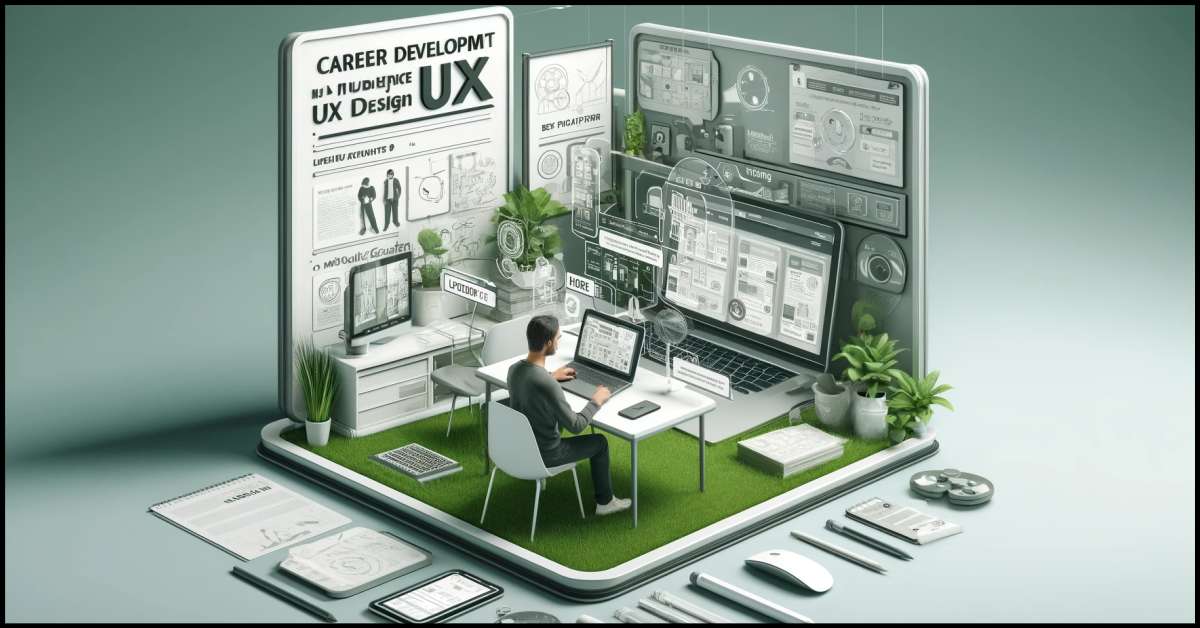This article delves into the complexities of designing seamless user experiences across multiple devices, emphasizing the importance of responsive design, user-centered processes, and collaboration within UX frameworks. By integrating advanced tools like Figma and employing robust UX research methods, designers can create cohesive and accessible interfaces that cater to diverse user needs. The discussion extends to practical application through case studies and highlights essential strategies for UX professionals aiming to excel in multi-device environments. This comprehensive approach not only enhances usability but also aligns with the latest UX design innovations and best practices.
By Samareh Ghaem Maghami, Associate Technical and Interior Designer at Cademix Institute of Technology
Introduction
In today’s digital ecosystem, optimizing user experience (UX) for multi-device interactions has become imperative. As technology evolves, users frequently switch between smartphones, tablets, desktops, and other connected devices, expecting a seamless and consistent experience. Effective UX design frameworks are crucial in meeting these expectations, ensuring that every user interaction feels intuitive and effortless across all platforms. This introduction will set the stage for a deep dive into the user-centered design process, highlighting the significance of responsive design for UX, UX design best practices, and the application of UX research methods to create universally satisfying user journeys.

Understanding the User and Their Environment
Creating user personas is a foundational step in the user-centered design process, allowing designers and developers to empathize with and predict the needs, behaviors, and motivations of their users. By meticulously developing user personas, UX professionals can tailor their designs to accommodate the specific characteristics and preferences of different user groups. This personalized approach not only enhances user satisfaction but also optimizes the usability and effectiveness of products across multiple devices.
UX research methods are essential for gathering actionable insights that drive informed design decisions. Techniques such as user interviews, usability testing, and analytics review are pivotal in understanding how users interact with devices in various contexts. Incorporating UX research early and throughout the design process ensures that all decisions are data-driven and user-focused, ultimately leading to a more intuitive and engaging multi-device experience. By leveraging insights gained from UX research methods, designers can create responsive and adaptable interfaces that meet the high standards of today’s tech-savvy users.
Designing for Consistency Across Devices
Responsive design is a cornerstone of modern UX design, ensuring that applications and websites adapt smoothly to different screen sizes and orientations. This approach is critical for maintaining functional and aesthetic consistency across devices, from desktop monitors to mobile phones. By implementing responsive design principles, UX designers enable a unified interface experience that accommodates diverse user environments without sacrificing usability or design integrity.
Integrating a cohesive user interface (UI) across multiple devices is fundamental to a seamless user experience. This section explores how UX designers can achieve consistent UI elements that function harmoniously on various platforms. Techniques like maintaining a common design language, consistent iconography, and synchronized color schemes are discussed to enhance UI integration. The goal is to create an intuitive and familiar environment for the user, regardless of the device they choose to use.
Utilizing the right tools is crucial for efficient UX design across multiple devices. This subsection delves into how tools such as Figma and other UX prototyping tools support collaborative design efforts and ensure consistent outputs across different platforms. The use of wireframing tools is also highlighted, underscoring their importance in the early stages of design for laying out the structure and key UI elements across different screen sizes. The section will emphasize how these tools facilitate a streamlined, agile approach to multi-device UX design, enhancing both productivity and project outcomes.
Collaboration and Process Optimization
Effective collaboration is vital in the field of UX design, particularly when projects span multiple devices and platforms. This section explores how UX design collaboration can be enhanced through tools and practices that promote communication and synergy among cross-functional UX teams. Emphasizing the benefits of collaborative environments, the discussion includes how shared understanding and iterative feedback loops contribute to innovative, user-centered solutions.
The integration of cross-functional teams is essential for addressing the complex challenges of multi-device UX design. This section highlights the roles and contributions of various professionals, including UX researchers, UI designers, developers, and project managers. By leveraging diverse perspectives and expertise, cross-functional teams can create more comprehensive and effective UX strategies that cater to a broader range of user needs and device specifications.
Managing UX projects effectively is crucial for the timely and successful delivery of multi-device experiences. This subsection discusses the application of UX design project management techniques, focusing on how to coordinate tasks, milestones, and resources efficiently. It also covers the integration of UX and Agile methodologies, which support a flexible and responsive approach to design and development, allowing teams to adapt to user feedback and evolving project requirements swiftly.
Incorporating Agile methodologies into UX design processes is increasingly popular for its adaptive and user-focused approach. This section delves into how Agile practices can be aligned with UX goals to enhance product development cycles, ensuring that designs are tested and iterated upon in real-time. The benefits of Agile, including faster turnaround times, increased transparency, and improved stakeholder engagement, are discussed to underline how they contribute to superior UX outcomes across multiple devices.

Ensuring Accessibility and Inclusivity
Adhering to accessibility standards is not just a regulatory compliance issue but a crucial aspect of creating inclusive multi-device user experiences. This section emphasizes the importance of UX design accessibility standards in ensuring that digital products are usable by people with a wide range of disabilities. Strategies for incorporating accessibility from the ground up in the design process are explored, highlighting the role of accessibility audits and user testing in achieving universally accessible designs.
Usability testing is a key method for validating UX designs across different devices, ensuring that interfaces are intuitive, efficient, and effective. This subsection dives into various usability testing techniques tailored to multi-device environments. From remote user testing to in-lab sessions, the focus is on gathering critical user feedback that drives iterative improvements. The use of detailed scenarios and personas in usability testing is also discussed to ensure that all potential user interactions are explored and optimized.
Advanced Strategies for UX Optimization
As digital landscapes evolve, so do the strategies for optimizing UX in multi-device interactions. This section discusses advanced digital product UX strategies, including the use of data analytics to refine user interfaces and the implementation of machine learning algorithms for personalized user experiences. The importance of predictive UX, where user needs are anticipated based on behavioral data, is highlighted as a forward-thinking approach to enhance engagement and satisfaction across all platforms.
Innovation in UX design is crucial for staying ahead in a competitive digital environment. This subsection examines the latest UX design innovations, such as voice user interfaces (VUIs) and augmented reality (AR) interfaces, which are redefining user interactions across multiple devices. The potential of these technologies to create more dynamic and immersive UX is discussed, alongside examples of how leading companies are integrating innovative solutions into their multi-device strategies.
Real-World Application and Case Studies
The practical application of the discussed theories and strategies is illustrated through detailed case studies of successful multi-device UX implementations. This section showcases companies that have excelled in creating cohesive and engaging user experiences across a range of devices, analyzing the techniques and methodologies that led to their success.
Further exploring the theme, this subsection looks at how top companies are specifically addressing the challenge of seamless device transitions in their UX strategies. Insights into the processes, tools, and collaborative efforts that enable these companies to provide a flawless user experience, regardless of device or platform, are provided, serving as inspiration for UX professionals looking to refine their own practices.

Building a Career in Multi-Device UX Design
The expanding need for sophisticated multi-device experiences opens a broad spectrum of career opportunities for UX professionals. This section outlines the various roles and career paths available within the multi-device UX design landscape, from user research and interaction design to UI development and project management. It emphasizes how a solid understanding of responsive design, user-centered processes, and collaborative skills can position UX designers for success in a dynamic field.
Adhering to best practices in UX design is essential for creating effective and satisfying user experiences across multiple devices. This subsection distills key UX design best practices, drawing on industry standards and expert recommendations. Topics include maintaining consistency in visual elements, ensuring accessibility, implementing user feedback effectively, and staying updated with the latest UX design innovations and tools. The section aims to equip aspiring UX professionals with the knowledge and skills needed to excel in the field.
Conclusion
The conclusion summarizes the key strategies discussed throughout the article, emphasizing the importance of a comprehensive, user-centered approach to UX design. It reflects on the integration of responsive design techniques, the utilization of advanced UX tools, and the role of rigorous usability testing in creating seamless user experiences across different devices.
Looking ahead, this section speculates on the future trends and challenges in UX design as technology continues to evolve. It highlights the potential impacts of emerging technologies like AI and IoT on multi-device UX, suggesting that professionals in the field will need to continuously adapt and innovate to meet changing user expectations and technological capabilities.
The article concludes with a call to action for UX professionals and students to embrace the evolving landscape of multi-device design. It encourages continuous learning, active participation in UX communities, and a proactive approach to integrating new technologies and methodologies into their work to stay ahead in the field and make meaningful contributions to user experiences.

About the Author
Samareh Ghaem Maghami is a master’s student in eco-design at FH Wiener Neustadt, with a rich background in painting and experience in interior decoration and event management. Living in Austria, Samrah combines her artistic insight and practical skills to explore innovative solutions in UX design, focusing on sustainable and user-centered approaches. Passionate about nature and a proactive volunteer for animal welfare, she advocates for incorporating ecological considerations into design processes to enhance both user experience and environmental impact.
Samareh invites fellow UX enthusiasts and eco-design scholars to engage in a dialogue about integrating sustainability into UX practices, promoting a future where technology not only serves human needs but also respects and preserves our natural environment. She is also an Associate Technical and Interior Designer at Cademix Institute of Technology and a member of the Cademix Career Autopilot Program.
Please feel free to contact her under:
E-mail: sam.gh.maghami@gmail.com
E-mail: samareh.ghaem-maghami@cademix.org
LinkedIn: https://www.linkedin.com/in/samareh-ghaem-maghami
Xing: https://www.xing.com/profile/Samareh_GhaemMaghami

